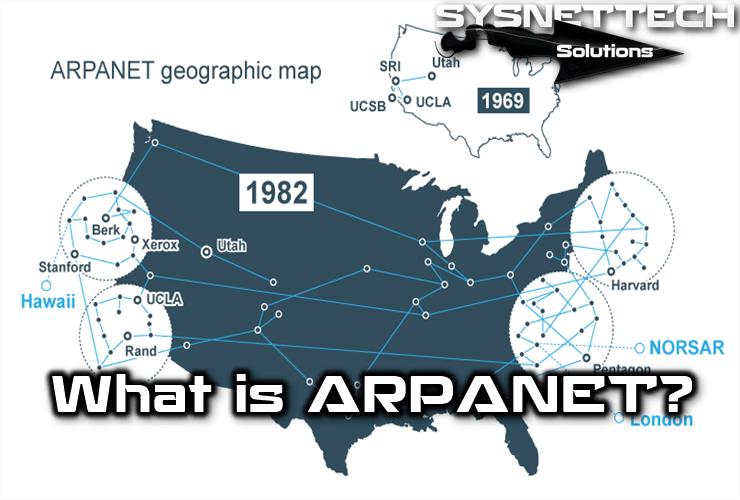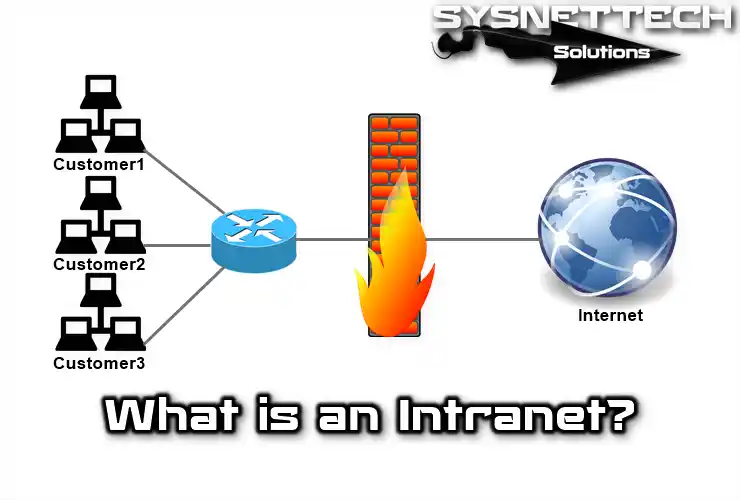ARPANET is a network of approximately 60,000 computers, developed in the 1960s by the United States Department of Defense’s ARPA (The Advanced Research Projects Agency Network).

ARPANET History
It was feared that telephone exchanges would be destroyed in the event of an attack, so an attempt was made to create a completely decentralized data switching system. The developed communication protocols led to the current internet. In 1990, Arpanet was replaced by the National Science Foundation Network (NSFNET) to connect its supercomputers to regional networks. Today, NSFNET functions as the high-speed core of the internet.
Introduction to Communication Networks
Universal information sharing between computer groups and users is a vital component of the information age. In the eighties, the generalization of the computer or personal computer (PC) and local area network (LAN) created the possibility of accessing information in remote databases, installing applications from overseas points, sending messages to other countries and sharing them all.
Networks that allow all these are advanced and sophisticated equipment. Its effectiveness is based on the combination of many different components. The design and implementation of a global computer network are one of the great ‘technological miracles’ of the past decades.
Modem and Service Companies
Still, in the 1970s, computers were expensive and fragile machines that were kept in rooms maintained and maintained by experts. A terminal can be connected directly or via a telephone line and a modem to use them and access them from a remote location. Because of their high cost, they were central resources that the user accessed on their own. During this time, many organizations and service companies emerged that offered processing time on a host computer. Computer networks were not commercially available. However, one of the most important developments for the tech world began in those years: experiments by the US Department of Defense to distribute computing resources as protection against failures. This project is now called the Internet.
Local Area Networks (LAN)
One of the most critical events for networking is the emergence and rapid spread of the local area network (LAN) as a way to normalize connections between machines used as office systems. As the name suggests, it creates a way to connect a range of computer equipment. A basic level of LAN is nothing more than a shared environment (such as a coaxial cable to which all computers and printers are connected), along with a set of rules governing access to this environment.
Ethernet, the most widely used LAN, uses a mechanism known as CSMA/CD. This means that each connected device can only use the cable when no other equipment is used. If there is a conflict, the computer trying to establish the connection will cancel the connection and try again later. Ethernet transfers data at 10 Mbits / s, making the distance between various computers negligible and giving the impression that they are directly connected to their destination. There are a wide variety of typologies (bus, star, ring) and different access protocols.
Despite this variety, all LANs share limited coverage and sufficient speed so that the connection network is not seen by the equipment that uses it. In addition to providing shared access, modern LANs provide the user with many advanced functions. Management software packages are available to control the configuration of equipment on the LAN, management of users and control of network resources. A commonly used structure consists of several servers that can be used by different users. Servers, which are usually more powerful machines, provide users with services for personal computers, such as print control, file sharing and e-mail.
Roads and Bridges
Services on most LANs are very powerful. Organizations generally do not want to encounter isolated kernels of computer utilities; they prefer to extend these services to a wider area so that groups can work independently of their location. Routers and bridges are special devices that allow you to connect two or more LANs. The bridge is the most basic equipment and only allows multiple LANs of the same type to be connected. The path is a smarter element and allows different types of computer networks to be interconnected. Large companies have corporate data networks based on various LANs and routes. For the user, this approach provides a physically heterogeneous network that looks like a homogeneous resource.
Wide Area Networks (WAN)
Once a certain point is reached, it is not practical to continue expanding a LAN. Although there are usually more or less expensive ways to expand a computer network, this is imposed by physical limitations. Two of the important components of any network are the telephone network and data network. They are long-distance connections that extend the LAN to the wide-area network (WAN).
Almost all national network operators offer services to connect computer networks ranging from simple low-speed data connections that run on the public telephone network to complex high-speed services suitable for connecting LANs. These high-speed data services are often called broadband connections. They are expected to provide the necessary connections between LANs to provide what is known as information highways.
Distributed Process
It seems logical to assume that computers can work together when they have a broadband connection. However, how can computers from different manufacturers in different countries collaborate worldwide? Until recently, most computers had their own interfaces and presented their own structure. A team could communicate with another member of the same family, but had great difficulty doing this with a stranger. Only the most privileged had the time, knowledge and equipment to extract what they need from different computing resources. In the 1990s, the level of agreement between different computers reached the point where they could effectively connect with each other and allowed everyone to take advantage of remote equipment. The main components of this process are client/server systems, object technology, and open systems.
Client/Server
There is a general agreement to build computer systems as client/server systems rather than as monolithic elements. The client (a PC user) requests a service (such as printing) provided by a server (a processor connected to the LAN). This common approach to the structure of computer systems turns into the separation of functions that previously formed a whole. The details of the application range from simple approaches to the possibility of properly operating all computers.
Object Technologies
Another approach to the construction of systems starts from the hypothesis that they consist of perfectly defined elements, closed, defined and realized objects and make them independent agents. The adoption of objects as tools for the construction of computer systems contributed to the exchange of different elements.
Open Systems
This definition refers to computer systems that provide easy interconnection and deployment in architecture. In practice, an open system concept means disconnecting all components of one system and using similar structures in all others. This includes a mix of standards and partnerships. As a result, they can talk to each other.
The ultimate goal of all efforts to open systems is that everyone buys computers from different manufacturers, places them wherever they want, and use broadband connections to connect them.
Security
Computer security is becoming increasingly important as the volume of information available in distributed computers increases. In such a system, it is very easy for an expert user to secretly access confidential data. The Data Encryption System (DES) standard for computer data protection introduced in the late 1970s is complemented by public-key systems that enable users to easily encrypt and decode messages without third-party intervention.
Administration
Having fast computer networks that can connect to each other is not the endpoint of this approach. The figures of “user of the information highway” and “works of the information highway” have not been defined yet.
The task of maintaining a LAN requires full dedication. It is an even bigger challenge for a worldwide distribution network to run smoothly. Recently, much attention has been given to basic concepts related to the management of heterogeneous and distributed networks. There are already enough tools for this important package to effectively monitor global networks.
Related Articles
♦ What is TCP?
♦ What is RAM?
♦ HTTP/HTTPS
♦ What is WEP?
♦ What is UDP?



